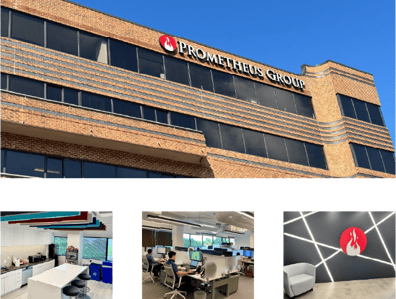Effective maintenance planning is the backbone of operational efficiency in asset-intensive industries such as manufacturing, energy, and infrastructure. A well-structured maintenance strategy not only minimizes downtime but also extends the lifespan of critical assets, optimizes resource allocation, and enhances overall productivity.
For maintenance managers and operations directors, balancing daily maintenance tasks while planning for long-term reliability is a constant challenge. Without a clear and proactive maintenance plan, organizations risk unexpected equipment failures, increased operational costs, and disruptions in workflow.
This blog explores six fundamental principles of maintenance planning, providing actionable best practices to help organizations develop a structured, efficient, and data-driven approach. By integrating these principles into your maintenance strategy, you can drive greater operational stability, improve workforce efficiency, and achieve long-term business success.
What are the 6 basic principles of maintenance planning?
1. A separate department for planners
One of the foundational best practices in maintenance planning is maintaining a dedicated department for planners. Separating planning from execution allows for greater specialization in scheduling techniques, ensuring that maintenance operations remain structured, proactive, and efficient.
Key considerations:
- Separation of roles: Planners are organized into a separate department from the craft maintenance crews. This facilitates specialization in planning and scheduling techniques as well as focus on future work. Planners should not be members of the craft crew for which they plan. This distinction ensures that planning remains a forward-looking function rather than a reactive one.
- Clear reporting structure: Planners should report to a different supervisor than the craft crews–a key best practices indicator. This avoids reassigning a planner to a toolbox and prevents conflicts of interest and ensures accountability in both planning and execution.
- Dedicated focus: Planners plan work. The crews execute the planned work. The planning team should concentrate exclusively on scheduling, estimating, and preparing work orders, leaving craft technicians to focus on executing the work efficiently.
By keeping planning and execution separate, maintenance teams can allocate resources more effectively, reduce inefficiencies, and create a structured workflow that prioritizes long-term asset reliability over short-term fixes.
2. Focus on future work for proactive maintenance planning
A key element of effective maintenance planning is focusing on future work rather than just addressing immediate issues. A well-structured backlog of planned and approved tasks ensures that maintenance teams are not operating reactively but are instead working within an optimized, forward-thinking framework.
Best practices for future work planning:
- Maintain a minimum backlog: Planners should concentrate on future work - the work yet to start. Maintenance planners should prepare at least one week of fully planned, approved, and ready-to-execute work. The one-week backlog will allow crews to work primarily on planned work. A 3-4-week backlog is even more effective in ensuring consistent workflow and reducing scheduling gaps.
- Delegate daily troubleshooting: While planners concentrate on upcoming work, crew supervisors should handle the current day’s work and problems. The craft technicians or supervisors should resolve any problems that arise after any job begins. This will keep teams agile without disrupting the overall schedule.
- Leverage feedback loops: Collecting and analyzing post-job feedback enables planners to refine job estimates, improve scheduling accuracy, and enhance overall efficiency.
- Follow the two “Rules of Repetitive Maintenance"
- The 50% rule: If a piece of equipment needs work, there is a 50% chance it will need the similar, if not the same, work within 1 year.
- The 80% rule: There is any 80% chance the equipment will be worked on again within a 5-year period
By structuring planning around future maintenance needs, teams can systematically reduce downtime, extend asset life, and create a more reliable maintenance workflow. A proactive approach allows organizations to anticipate issues before they cause costly disruptions, improving both efficiency and operational performance. In conclusion,
- Feedback on jobs completed is the path to increased productivity.
- Feedback should be provided to the planner after each job is completed.
- Planners should use the feedback to improve future work.
- Benchmark: 6 months of feedback will make job estimates and costs more accurate.
3. Maintain component-level files
Proper documentation is the foundation of an effective maintenance planning strategy. Planners should maintain detailed and structured component-level records that include historical data on past work, equipment conditions, and repair trends. This level of detail allows maintenance teams to make informed, data-driven decisions that improve efficiency and reduce unnecessary rework.
Why detailed component-level records matter:
- Best practice: It is best practice to have individual component level files maintained. Planners should maintain this simple, secure file system based on equipment/asset numbers and not by manufacturer or vendor.
- Prevents redundant work: This information allows the planners to utilize equipment data and information learned on previous work to prepare and improve work plans, especially on repetitive tasks.
- Improved work estimates: Historical information consists of both work order history and equipment databases. This data provides insight into recurring maintenance issues, allowing planners to develop more accurate job estimates and resource allocations.
- Cost-effective repair vs. replace decisions: A well-documented maintenance cost history helps teams assess whether repairing a component is more economical than replacing it, ensuring optimized spending.
- Efficient access to information: Engineers and supervisors should be trained to always use these files to gather information they require with minimal planner assistance.
- Standardized maintenance across locations: Keeping consistent records ensures maintenance teams follow the same procedures across different facilities, improving reliability and compliance with operational best practices.
By maintaining component-level records, planners create a repository of knowledge that enables smarter decision-making, prevents redundant work, and enhances the overall effectiveness of maintenance planning. Investing in proper documentation not only optimizes day-to-day maintenance activities but also supports long-term asset management and reliability strategies.
4. Estimate jobs based on planner expertise
Accurate job estimation is critical to reducing delays, improving efficiency, and ensuring maintenance activities are executed safely and effectively. Effective job estimates help planners allocate the right resources, minimize downtime, and create structured maintenance workflows that reduce last-minute disruptions.
Best practices for job estimation:
- Leverage historical data & planner expertise: Planners should use personal experience and information on file to develop work plans that avoid anticipated work delays, quality or safety problems. This combination of past job data and experienced judgment leads to realistic job duration estimates and material requirements.
- Select experienced technicians for planner roles: Planners should ideally be experienced senior level technicians, trained in the appropriate planning disciplines and techniques. Planners with this extensive hands-on experience can better anticipate job complexities, ensuring smoother execution.
- Provide specialized training: Planner training should include specialized techniques such as industrial engineering, statistical analysis, and on-the-job training and feedback. Learning these maintenance best practices will enhance their ability to estimate and allocate resources efficiently.
- Account for the learning curve: Choose from among the best crafts persons for your planners. Transitioning a skilled technician to a planner role may temporarily impact department productivity for a few months, but the long-term benefits of enhanced planning efficiency far outweigh the short-term adjustment period.
- Balance detail with flexibility: While precise job planning is essential, excessively rigid plans can slow execution. Planners should create structured yet adaptable work instructions that allow for real-world variability.
By ensuring job estimates are both precise and practical, maintenance teams can significantly improve work execution, enhance resource allocation, and minimize unplanned delays. A data-driven approach to job estimation leads to more predictable maintenance schedules, improved equipment reliability, and overall operational success.
5. Recognize the skills of the craft technicians
Effective maintenance planning should align job plans with the skill level of the workforce. Striking the right balance between providing detailed instructions and allowing technician autonomy ensures efficiency while fostering engagement and problem-solving skills.
Best practices for optimizing job plans:
- Standardize repetitive tasks: For common maintenance activities, using standardized job plans streamlines execution, maintains consistency, and reduces planning time.
- Adjust job plan detail based on skill level: Highly experienced technicians may only need high-level guidance, while less experienced team members benefit from step-by-step instructions to ensure proper execution.
- Clearly define the work scope: Planners should establish the scope of work, gather all necessary engineering requirements, and provide relevant documentation before the job begins. This prevents delays and miscommunication.
- Empower technicians with decision-making authority: While structured job plans are essential, technicians should have the flexibility to adapt based on real-world conditions. Skilled workers can often find more efficient or effective ways to complete tasks within the given framework.
Providing structured but adaptable job plans ensures that maintenance tasks are executed efficiently, optimizes workforce potential, and minimizes unnecessary oversight. When technicians are given both the guidance and autonomy they need, overall job performance, productivity, and engagement improve.
6. Measure performance with work sampling
To ensure maintenance planning delivers its intended efficiency gains, organizations must track and analyze technician productivity through work sampling. Measuring how time is spent on maintenance tasks helps identify inefficiencies, optimize workflows, and improve overall execution.
Key metrics for work sampling:
- Wrench time: This measures the percentage of time technicians spend actively working on maintenance tasks, rather than waiting for parts, tools, or instructions. A best practice benchmark is achieving at least 60% wrench time to ensure efficiency.
- Identify bottlenecks and inefficiencies: Work sampling helps pinpoint common delays, such as time lost due to inadequate job preparation, waiting for approvals, or searching for necessary materials.
- Utilize data for continuous improvement: By analyzing performance data, maintenance teams can refine schedules, allocate resources more effectively, and implement proactive strategies to minimize downtime.
A structured approach to work sampling not only enhances workforce productivity but also supports long-term maintenance planning improvements. By leveraging data-driven insights, organizations can streamline operations, optimize resource utilization, and create a more efficient, cost-effective maintenance program.
FAQs
Planned maintenance follows a structured process to ensure efficiency and reliability. The four key phases include:
- Planning: Identifying maintenance needs, defining the scope of work, and gathering necessary resources such as tools, materials, and labor.
- Scheduling: Assigning jobs to specific time slots based on priority, resource availability, and production schedules to minimize disruptions.
- Execution: Carrying out maintenance activities as planned, ensuring adherence to safety protocols and best practices.
- Review & improvement: Gathering post-job feedback, analyzing performance data, and refining future maintenance plans to improve accuracy and efficiency.
By following these phases, organizations can ensure a structured approach to maintenance that enhances operational reliability and reduces unexpected downtime.
A successful maintenance planner possesses a combination of technical expertise, analytical thinking, and strong coordination skills. The top three essential skills include:
- Analytical skills: The ability to assess data, identify trends, and develop effective maintenance strategies that optimize efficiency and resource allocation.
- Technical knowledge: A strong understanding of equipment functions, repair techniques, and preventive maintenance methods to create accurate job plans.
- Communication & coordination: Effective collaboration with maintenance teams, supervisors, and engineers to ensure seamless execution of maintenance tasks and minimize operational disruptions.
These skills enable maintenance planners to streamline operations, reduce inefficiencies, and enhance overall maintenance effectiveness.
Best practices for maintenance planning:
Effective maintenance planning requires a structured approach that maximizes efficiency, minimizes downtime, and aligns with business objectives. Below are key best practices to ensure a well-optimized maintenance strategy:
- Designate dedicated maintenance planners: Assign experienced planners who can focus exclusively on organizing and scheduling maintenance tasks, ensuring efficiency and accountability.
- Regularly review and update maintenance plans: Continuously evaluate and refine maintenance plans to accommodate evolving operational needs, equipment conditions, and industry best practices.
- Train maintenance teams on best practices and emerging technologies: Keeping staff well-trained in the latest maintenance techniques and tools improves execution, safety, and efficiency.
- Utilize data-driven decision-making: Leverage historical job data, performance metrics, and predictive analytics to create accurate job estimates, optimize resource allocation, and improve scheduling accuracy.
- Set achievable maintenance goals: Establish clear, realistic maintenance objectives that align with broader business goals, ensuring that resources and priorities are effectively managed.
- Enhance cross-departmental communication: Foster collaboration between maintenance, operations, and engineering teams to streamline workflows, reduce miscommunication, and improve overall maintenance execution.
By implementing these best practices, organizations can enhance maintenance effectiveness, improve asset reliability, and optimize operational efficiency.
A well-structured maintenance planning process provides several key advantages that directly impact productivity, costs, and workplace safety:
- Increased productivity: A proactive approach reduces unplanned downtime, allowing maintenance teams to work more efficiently while ensuring assets remain operational
- Cost savings: Improved budgeting, resource allocation, and preventive strategies help reduce maintenance costs and minimize expensive emergency repairs
- Enhanced equipment reliability: Regularly planned maintenance extends asset lifespan, prevents unexpected failures, and reduces costly production interruptions
- Improved workplace safety: Ensures compliance with safety regulations, minimizes hazards, and creates a safer work environment for employees
By integrating effective maintenance planning strategies, organizations can maximize operational efficiency, reduce costs, and create a more reliable and safe working environment.
Taking maintenance planning to the next level
Implementing structured maintenance planning principles can transform maintenance operations by reducing downtime, optimizing resource allocation, and improving asset reliability. A proactive and data-driven approach ensures that maintenance teams can work more efficiently, extend equipment lifespan, and align maintenance goals with overall business objectives.
By following these six core principles, organizations can create a scalable and effective maintenance strategy that enhances productivity and minimizes unexpected failures. Whether it's prioritizing future work, leveraging historical data, or refining performance measurement, each step contributes to a more resilient and well-organized maintenance program.
How Prometheus Group can help
At Prometheus Group, we understand that effective maintenance planning requires the right tools and expertise. Our industry-leading maintenance planning and scheduling solutions help organizations improve operational efficiency, optimize resource allocation, and drive long-term asset performance.
With Prometheus Planning & Scheduling, you can:
- Streamline work order management and scheduling for improved efficiency
- Leverage data-driven insights to make informed maintenance decisions
- Reduce unplanned downtime and extend asset life through proactive maintenance
- Enhance team collaboration with seamless communication and workflow integration
For those looking to refine their maintenance strategy, our white paper on Maintenance Planning & Scheduling Best Practices offers expert guidance and proven strategies.
Take the next step toward optimizing your maintenance operations—contact Prometheus Group today to see how our solutions can improve your efficiency and reliability.



